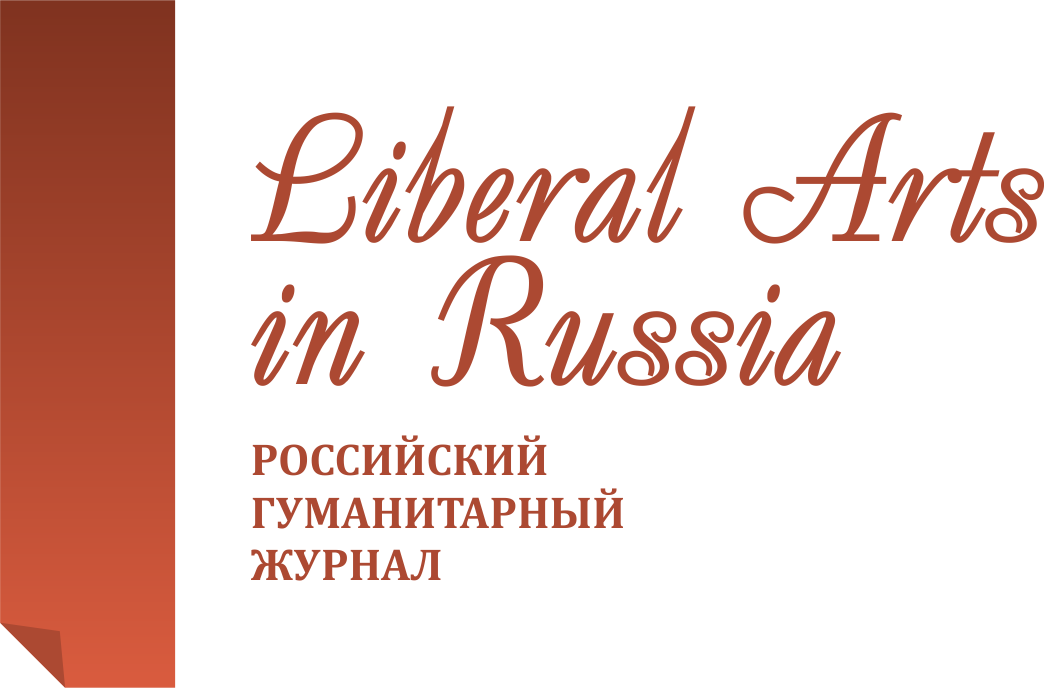The conception of Umberto Eco’s literary art and representation of writer’s model “Umberto Eco - M-author”
Liberal Arts in Russia. 2016. Vol. 5. No. 6. Pp. 543-553.
Get the full text (Russian) Email: fedoraleksan@yandex.ruAbstract
The development of the conception of U. Eco’s literary art is considered on examples of “Notes in the margins of the novel ‘The Name of the Rose’”, “The Role of the Reader”, “From Internet to Gutenberg”, and “Confessions of a young novelist”. In the article, the non-classical character of literary creativity and theory of Eco is discussed that is realized through the transformation of some ideas and conclusions of semiotics, structuralism, post-structuralism, and postmodernism. In “Confessions” Eco talks about the relationship between himself as an author, his creations as texts, and the audience as readers. He distinguishes two types of readers: Empirical reader and Model reader. The article indicates the basic components of Eco’s literary theory of Interpretation (double code, text, narrative, metanarrative, intertext, semiotic strategy, concept). Eco considers that author will be interpreted not according to his intentions, but according to a complex strategy of interactions and intertextual meanings, based on fictional realms of novels. The article pays attention to Eco’s way from writing on non-fiction to fiction and otherwise, by exploring the boundary between fiction and nonfiction. However, in the practice Eco constitutes the relationship between fictional and nonfictional parts of literary art. As a result, Eco creates a kind of hypertext - the network of ideas, meanings, senses, codes, signs, interpretations, and so on. All of this gives the opportunity to make up the conclusion that Eco created the modern type of model writer - “Umberto Eco - M-author” that helps to appear the new kind of reader, the “Model reader”.
Keywords
- • postmodernism
- • interpretation
- • Model reader
- • Empirical reader
- • hypertext
- • The Open Work
- • double code
- • non-fiction
- • metanarrative
- • intertext
- • narrative
- • author
- • text
- • post-structuralism
References
- Eco U. Opera aperta. Milano: Bompiani, 1962.
- Eko U. Otkrytoe proizvedenie. Forma i neopredelennost' v sovremennoi poetike [The open work. The form and uncertainty in contemporary poetics]. Saint Petersburg, 2004.
- Usmanova A. R. Umberto Eko: paradoksy interpretatsii [Umberto Eco: paradoxes of interpretation]. Minsk, 2000.
- Eco U. Six Walks in the Fictional Woods. Harvard University Press, 1994.
- Eko U. Shest' progulok v literaturnykh lesakh [Six walks in the fictional woods]. Moscow, 2002.
- Eco U. The Role of the Reader: Explorations in the Semiotics of Texts. Bloomington, IN: University of Indiana Press, 1979.
- Eko U. Rol' chitatelya. Issledovaniya po semiotike teksta [The role of the reader: Explorations in the semiotics of texts]. Saint Petersburg, 2007.
- Eco U. From Internet to Gutenberg. A lecture presented by Umberto Eco at Columbia University, November 12, 1996. URL: http://www.umbertoeco.com/en/from-internet-to-gutenberg-1996.html.
- Eco U. Postille al nome della rosa. Milano, Bompiani, 1984,.
- Eko U. Imya rozy. Moscow, 1989.
- Eco U. Confessions of a young novelist. Harvard University Press, 2011.
- Eko U. Otkroveniya molodogo romanista [Confessions of a young novelist]. Moscow, 2013.
- Mann T. Iosif i ego brat'ya. Moscow, 1968. Vol. 2.
